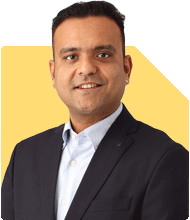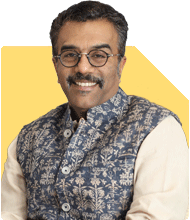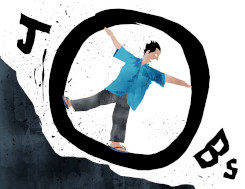Rohit Gupta | Answer |Ask -Follow
Edtech/Online Education Expert - Answered on Jan 15, 2024
Rohit is a first-generation entrepreneur who currently leads the company’s marketing and operations department.
A TEDx speaker, he was honoured with the ET Leadership Excellence Award 2022 for his effort in helping shape the lives of over 90,000 students through his platform.
Rohit is passionate about the potential of online education and is on a mission to democratise access to quality education and career opportunities.
He completed his schooling from Scholars Home in Dehradun and holds a bachelor’s degree in commerce from Deshbandhu College, Delhi.
... more

I passed my inter from commerce stream but then pursued Tool room and die making course . want to know what are the options for further improving my skills and knowledge for my future growth
You may like to see similar questions and answers below
Chocko Valliappa |539 Answers |Ask -Follow
Tech Entrepreneur, Educationist - Answered on Jan 31, 2024
Shekhar Kumar | Answer |Ask -Follow
Leadership, HR Expert - Answered on Sep 07, 2024
Chocko Valliappa |539 Answers |Ask -Follow
Tech Entrepreneur, Educationist - Answered on Jul 12, 2024
Prof Suvasish Mukhopadhyay | Answer |Ask -Follow
Career Counsellor - Answered on Nov 20, 2024
Ulhas Joshi |280 Answers |Ask -Follow
Mutual Fund Expert - Answered on Dec 05, 2025
Dr Dipankar Dutta |1835 Answers |Ask -Follow
Tech Careers and Skill Development Expert - Answered on Dec 04, 2025
Ravi Mittal |676 Answers |Ask -Follow
Dating, Relationships Expert - Answered on Dec 04, 2025
Anu Krishna |1745 Answers |Ask -Follow
Relationships Expert, Mind Coach - Answered on Dec 04, 2025
Anu Krishna |1745 Answers |Ask -Follow
Relationships Expert, Mind Coach - Answered on Dec 04, 2025
Mayank Chandel |2562 Answers |Ask -Follow
IIT-JEE, NEET-UG, SAT, CLAT, CA, CS Exam Expert - Answered on Dec 04, 2025
Mayank Chandel |2562 Answers |Ask -Follow
IIT-JEE, NEET-UG, SAT, CLAT, CA, CS Exam Expert - Answered on Dec 04, 2025
Mayank Chandel |2562 Answers |Ask -Follow
IIT-JEE, NEET-UG, SAT, CLAT, CA, CS Exam Expert - Answered on Dec 04, 2025
Mayank Chandel |2562 Answers |Ask -Follow
IIT-JEE, NEET-UG, SAT, CLAT, CA, CS Exam Expert - Answered on Dec 04, 2025
Mayank Chandel |2562 Answers |Ask -Follow
IIT-JEE, NEET-UG, SAT, CLAT, CA, CS Exam Expert - Answered on Dec 04, 2025



























